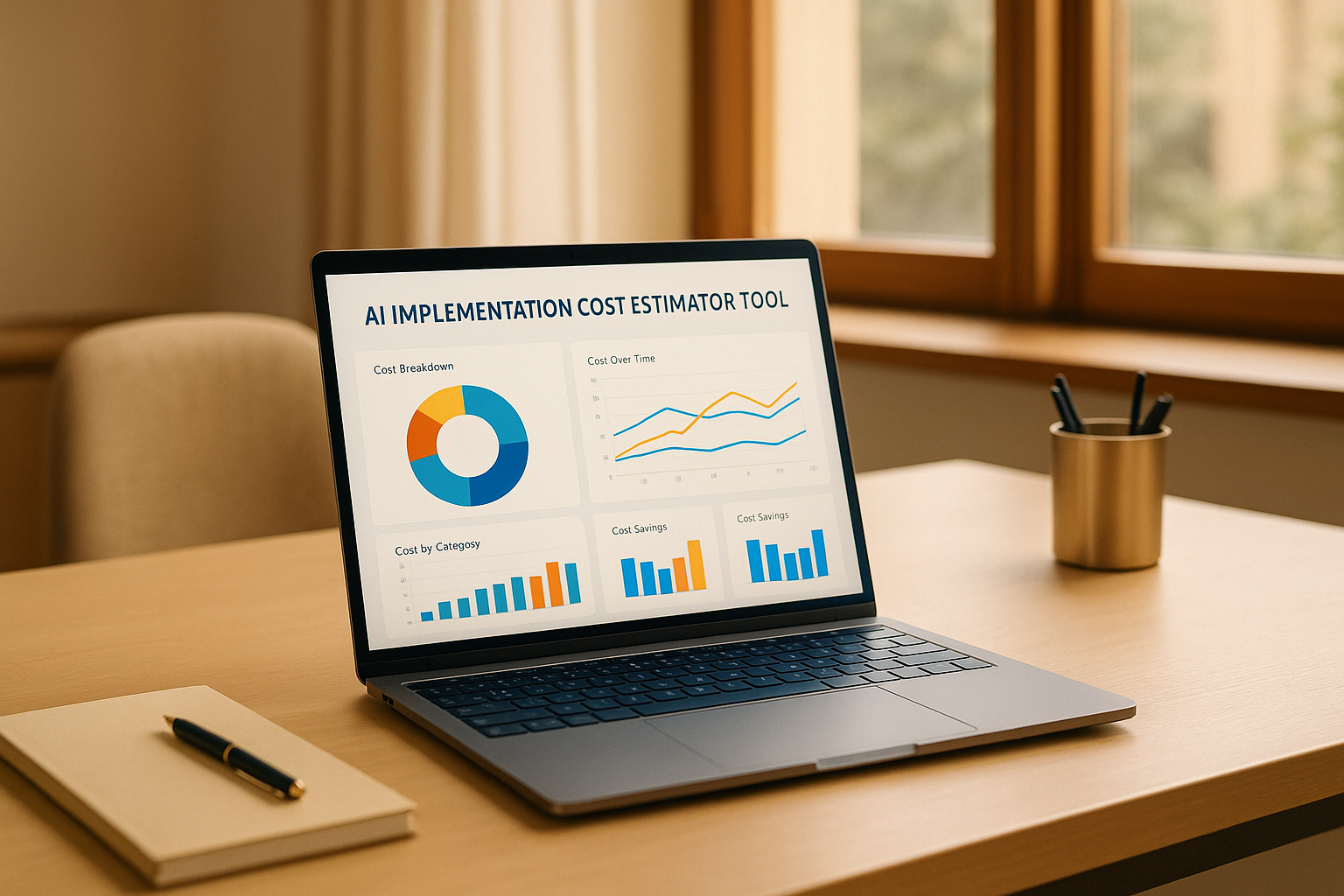
Fraud costs businesses billions annually, with global losses reaching $485.6 billion. Traditional methods can't keep up with modern threats, but Edge AI is changing the game. By processing data locally - on ATMs, point-of-sale (POS) terminals, and mobile apps - Edge AI detects fraud in milliseconds, offering faster responses and improved security.
With 91% of U.S. banks already using AI for fraud detection, Edge AI is proving essential for staying ahead of modern threats. By combining IoT devices, biometric systems, and predictive analytics, this technology offers a powerful way to combat fraud while maintaining data privacy and compliance.
Edge AI operates where transactions happen, processing data in milliseconds. This capability is why many financial institutions now rely on it for detecting fraud as it unfolds. The system works through three key steps, ensuring swift and efficient operation directly at transaction points.
Edge AI gathers detailed metadata - such as time, location, frequency, and device interactions - from ATMs, POS terminals, and mobile banking platforms. Some systems even incorporate biometric data through computer vision to spot skimming or tampering attempts. For example, Bank of America and Wells Fargo have successfully implemented such measures. By processing data locally, these systems minimize the need to send sensitive information elsewhere, making compliance with privacy laws like GDPR much easier.
With data secured and processed at its origin, the system quickly identifies potential fraud patterns.
Once the data is collected, local AI models step in to analyze it. They flag anomalies such as unusual withdrawal behaviors or clusters of transactions in short timeframes. For instance, systems deployed in cities like Hyderabad and Jaipur uncovered new fraud tactics that older methods couldn’t detect. Given that global transaction fraud losses exceeded $32 billion in 2023, the ability to analyze and respond to threats instantly at the source provides a massive advantage.
This immediate analysis enables real-time decision-making.
Using the data captured by IoT devices, Edge AI makes split-second decisions - approving, flagging, or rejecting transactions - without relying on cloud processing. This ensures legitimate transactions proceed without delay, while suspicious ones are stopped immediately. Flagged transactions and aggregated analytics are periodically uploaded to refine the AI models, creating a feedback loop for ongoing improvement. Mastercard’s implementation of this approach has shown measurable reductions in fraud losses. These refined models are then updated back to edge devices, ensuring the system stays ahead of evolving threats. The global market for such advanced fraud detection methods is projected to reach approximately $322 billion.
Edge AI fraud detection operates through three primary technologies that enable rapid identification of threats. By combining machine learning with biometric verification, these systems provide a strong safeguard against financial fraud while supporting real-time decision-making.
Anomaly detection works by defining what "normal" looks like and flagging anything that deviates from this standard. It constantly analyzes transaction data to establish baseline profiles of typical customer behavior.
"Anomaly detection simply means defining 'normal' patterns and metrics - based on business functions and goals - and identifying data points that fall outside of an operation's normal behavior." - IBM
Pattern recognition complements this by studying user behaviors and transaction trends to determine what qualifies as standard activity. When a transaction strays from these norms, the system flags it as potentially fraudulent. This tailored approach adapts to individual spending habits rather than relying on generic rules.
For example, Bank of America uses computer vision at ATMs to proactively combat fraud. By leveraging Edge AI, the system monitors for suspicious activity like skimming devices, notifying operators or authorities instantly. This prevents fraud before it can occur.
Edge AI's real-time capabilities significantly enhance detection speed. Computer vision systems can interpret visual data to identify unusual behavior, unauthorized access attempts, or environmental changes that signal tampering. This reduces false positives and ensures minimal disruption for legitimate customers.
"Anomaly detection is essential for early identification of suspicious activities, allowing businesses to intervene before fraud causes significant damage." - Fraud.com
Predictive modeling takes fraud detection a step further by using historical data to forecast potential risks. These AI-driven models continuously learn from both internal transaction data and external threat intelligence, allowing them to deliver accurate and fast risk assessments.
These systems evaluate transaction details and assign a fraud risk score. Machine learning algorithms process this complex data to uncover anomalies that human analysts might miss during routine transaction reviews.
A standout example is Mastercard's Decision Intelligence Pro, which employs advanced neural networks to dynamically analyze transactional behavior. By focusing on relationships between merchants and customers, it adapts to evolving patterns. This system has demonstrated a 20% average increase in fraud detection rates across financial institutions, with some cases showing up to a 300% improvement - all within just 50 milliseconds.
One global bank achieved a 40% reduction in credit card fraud during the first year after implementing predictive analytics technology. Considering that the average fraud incident costs organizations over $1.5 million, as reported by the Association of Certified Fraud Examiners, these predictive systems are becoming essential. Neural Technologies' ActivML platform further highlights this effectiveness, delivering real-time fraud detection with over 98% accuracy.
Biometric authentication adds another layer of security by verifying identities through unique physical traits that are difficult for fraudsters to duplicate. Edge AI enhances these systems by processing biometric data directly on devices, reducing latency and avoiding the need to transmit sensitive information to external servers.
Facial recognition systems powered by Edge AI can achieve accuracy rates above 99.5% under ideal conditions. These systems often combine multiple biometric modalities - like fingerprints, facial features, iris scans, and voice patterns - into unified, high-security profiles.
Beyond simple verification, AI-powered biometric systems can detect suspicious patterns, such as rapid login attempts from multiple IP addresses, or bots trying to emulate legitimate users during online transactions.
A practical example is Starship Technologies, which collaborated with Veriff to integrate biometric authentication into its autonomous delivery robots. This ensures secure deliveries of age-restricted items without relying on cloud connectivity.
"Partnering with Veriff allows Starship to autonomously deliver age-restricted items in the UK and beyond as we continue to take on new markets and stores at a rapid pace." - Ryan Tuohy, Senior Vice President of Business Development and Sales at Starship Technologies
Edge AI biometric systems also offer significant privacy benefits, which are increasingly vital as deepfake-related phishing and identity fraud incidents have surged by 3,000% in recent years. At Seychelles International Airport, AI-driven biometric systems have cut processing times by 84%, improving both security and customer experience. Unlike traditional methods, these AI-powered models continuously adapt, making them more resilient to emerging threats.
Behavioral biometrics further strengthen security by analyzing how users interact with devices - such as typing patterns, mouse movements, or touchscreen gestures. These dynamic authentication profiles are nearly impossible to replicate, creating an end-to-end fraud detection system that spans from spotting anomalies to confirming identities.
Edge AI processes transactions directly at their source, offering numerous advantages while also presenting hurdles that financial institutions must navigate carefully.
One of the standout benefits of Edge AI is real-time decision-making. By processing data locally, delays are minimized, enabling fraud detection in milliseconds. For example, a major bank using Edge AI saw a 30% drop in fraud cases within six months. Similarly, PayPal improved its fraud detection capabilities by 10% through continuous AI-powered monitoring, and American Express achieved a 6% enhancement in fraud detection using advanced long short-term memory (LSTM) models.
Local processing also strengthens data privacy and simplifies compliance with data residency laws by ensuring sensitive information remains within specific geographical boundaries.
Another advantage is reduced reliance on cloud systems, which lowers operational costs and improves efficiency. Mastercard, for instance, credits its advanced edge-based machine learning systems with saving billions in fraud prevention.
"Edge AI is more than just a technology upgrade in financial services; it's a paradigm shift. Institutions that harness Edge AI today will lead the charge into a smarter, more agile tomorrow." - Malcolm deMayo, Vice President, Financial Services at NVIDIA
While these benefits significantly enhance fraud detection and operational performance, Edge AI also comes with its own set of challenges.
One critical issue is the hardware limitations of edge devices. Compared to cloud servers, edge devices generally have less processing power and memory, which restricts the complexity of AI models they can handle. Additionally, these devices must function reliably under diverse environmental conditions, unlike the controlled settings of data centers.
Another challenge lies in managing model updates across distributed devices. Keeping AI models consistent and effective throughout a network requires coordinated updates and constant monitoring.
Security risks in distributed environments are another concern. Unlike centralized systems, edge deployments introduce more potential attack points. The variety of edge hardware further complicates efforts to implement standardized security measures.
Data privacy concerns also persist. Developers must strike a balance between effective financial surveillance and ethical data use. Financial institutions must also prove to regulators that their systems meet necessary surveillance standards and can justify the identification of suspicious activities.
Lastly, integration with existing banking infrastructure can be a significant hurdle. Legacy systems often require updates, and staff may need additional training to adapt to Edge AI technologies.
| Aspect | Benefits | Challenges |
|---|---|---|
| Processing Speed | Real-time decisions in milliseconds; 30% fraud reduction in 6 months | Limited processing power on edge devices; environmental constraints |
| Data Security | Privacy through local processing; compliance with data residency laws | Multiple attack vectors; complex security standardization |
| Operational Control | Reduced cloud dependence; billions saved in fraud prevention | Managing distributed networks; consistent model performance |
| Cost Efficiency | Lower bandwidth and cloud computing costs; 10% improvement in real-time detection | Ongoing maintenance and scalability challenges |
| Regulatory Compliance | Easier adherence to local data protection laws | Complex integration with existing compliance frameworks |
| System Integration | Improved customer experience through faster processing | Compatibility issues with legacy banking systems |
The global Edge AI market for financial services is projected to reach approximately $322 billion, signaling strong confidence in its potential. To ensure successful implementation, financial institutions should begin with pilot programs that demonstrate measurable value. These programs should focus on generating actionable alerts and interventions while maintaining cost-effectiveness. Moreover, robust data protection policies are crucial to complying with privacy regulations.
Edge AI has become a game-changer for US financial institutions, enhancing fraud detection and security measures at various touchpoints. By processing data locally, this technology transforms traditional security systems into faster, more responsive solutions.
Edge AI has redefined ATM security by enabling real-time monitoring and threat detection directly at the machines. Banks like Bank of America and Wells Fargo use computer vision systems to spot skimming devices or tampering attempts, ensuring immediate alerts to operators or authorities when issues arise. Similarly, Diebold Nixdorf incorporates AI into its machines, analyzing camera feeds locally to detect and respond to threats in real time.
These advancements have made a measurable difference. For instance, AI-powered video analytics have cut ATM-related fraud by as much as 40%. Considering that global financial fraud losses hit $485.6 billion annually, these measures are critical for safeguarding both customers and institutions.
"Edge AI sets a new benchmark for ATM security, making card-based fraud increasingly obsolete. With its ability to process data in real time and employ advanced security measures, this technology bolsters customer confidence and protects financial institutions from costly breaches." – Simply NUC
Point-of-sale (POS) terminals also benefit from Edge AI. The technology can instantly detect unusual transaction patterns, verify biometric data, and flag suspicious card activity. Beyond physical terminals, Edge AI plays a key role in ensuring secure and precise operations in digital banking environments.
Edge AI isn't limited to physical banking channels - it’s equally impactful in digital and mobile banking. Its ability to process data locally ensures secure banking even in areas with limited connectivity, making it invaluable for rural banking initiatives or disaster response scenarios.
For example, mobile devices and portable banking units equipped with Edge AI can analyze transaction patterns and detect anomalies without relying on cloud-based systems. This localized processing supports continuous fraud protection while maintaining operational efficiency.
Juniper Payments has demonstrated the effectiveness of embedded AI fraud engines, reporting significant reductions in account takeovers, first payment defaults, and other types of fraud.
"The fraud landscape is rapidly evolving, with bad actors leveraging automation, generative AI, synthetic identities and phishing schemes at scale. Traditional defenses won't keep up. With our embedded AI fraud engine, we're enabling real-time detection and decisioning, giving financial institutions the confidence to not only protect their assets, but to fully participate in the next generation of faster and instant payments." – Jon Budd, CEO of Juniper Payments
Mobile apps powered by Edge AI further enhance security by analyzing user behavior, such as typing patterns and device usage, to detect account takeovers. With fraud detection systems projected to save the banking industry over $8 billion annually by 2025, and 77% of banks investing in AI technology, the impact of this innovation is undeniable.
Edge AI makes Know Your Customer (KYC) processes faster and safer by handling identity verification locally. This includes scanning identity documents, validating biometrics, and cross-referencing data - all without transmitting sensitive information to external servers.
A striking example comes from HSBC, which introduced Pepper robots in select branches in March 2025. These robots use natural language processing and emotion detection to interact with customers in real time, thanks to low-latency AI processing on local edge servers.
This technology also combines facial recognition, signature matching, and document validation to reduce onboarding times. For instance, one European bank cut its average onboarding time from five days to under five minutes using an AI-driven KYC platform, leading to a 30% increase in completed applications.
Voice biometrics add another layer of security. A US fintech provider reduced fraud-related losses by 40% while improving customer satisfaction by using voice recognition to secure customer support channels.
Edge AI's ability to process sensitive data locally not only enhances privacy but also ensures compliance with strict data protection regulations. Multimodal biometrics - integrating facial recognition, voice recognition, and fingerprint matching - further strengthen security by creating multiple layers of verification that are difficult for fraudsters to bypass.
"We believe the future of compliance is proactive, not reactive. AI-enabled KYC allows financial institutions to lead with confidence, clarity, and customer-first thinking." – ReadyNine
Edge AI is revolutionizing fraud detection for financial institutions by shifting from traditional reactive approaches to smart, proactive defense systems. By processing data directly at the source - whether it's an ATM, a mobile device, or a POS terminal - this technology eliminates the delays that fraudsters often exploit, enabling detection and response in mere milliseconds.
The numbers speak for themselves: 91% of US banks already use AI for fraud detection, and institutions report an average 28% reduction in quarterly fraud losses after adopting real-time AI systems [5,44]. Mastercard credits advanced machine learning at the edge with saving billions in fraud prevention, showcasing the tangible impact of this technology.
Beyond stopping fraud, Edge AI enhances data privacy by processing sensitive information locally, reduces latency for quicker decision-making, and simplifies regulatory compliance by keeping data within controlled environments. Its ability to adapt to emerging threats is critical, especially as 83% of anti-fraud professionals plan to integrate generative AI into their systems by 2025.
With the global Edge AI market in financial services projected to hit $322 billion, US financial institutions that embrace this technology now will position themselves as leaders in the competitive landscape of tomorrow. Edge AI is not just about faster and more secure fraud detection - it’s about building trust and ensuring long-term success.
Ready to leverage the power of Edge AI? Partner with Artech Digital to implement custom machine learning models and cutting-edge computer vision solutions for real-time fraud prevention.
Edge AI enhances data privacy by handling sensitive information directly on local devices instead of relying on external servers. This approach minimizes the chances of data being exposed during transmission or storage since fewer data transfers mean fewer vulnerabilities to exploit.
By processing data closer to its source, Edge AI not only safeguards personal and financial information but also supports real-time fraud detection. This method offers a more secure, faster, and efficient way to manage sensitive data without compromising safety or speed.
Financial institutions face several hurdles when adopting Edge AI for fraud detection. A key issue is data privacy - handling sensitive financial data on edge devices demands stringent security measures to guard against unauthorized access. This becomes even more critical given the nature of financial transactions.
Another significant obstacle is the high cost of implementation. Deploying and maintaining Edge AI systems often requires a hefty investment in both advanced hardware and specialized software, which can be particularly challenging for smaller organizations with limited budgets.
Ensuring data quality and consistency is also a critical challenge. With information coming from various sources, like IoT devices, maintaining uniformity and reliability is essential for accurate fraud detection. On top of that, there's the looming threat of adversarial attacks, where bad actors try to manipulate AI systems to evade detection.
Addressing these challenges calls for a well-thought-out strategy, robust security measures, and continuous system improvements to ensure effectiveness and reliability.
Edge AI boosts the security of financial transactions by using biometric authentication methods like fingerprint or facial recognition. These technologies ensure that only the rightful account holder can complete a transaction, significantly reducing the chances of fraud or unauthorized access.
What sets Edge AI apart is its ability to process biometric data directly on the device. This eliminates the need to send sensitive information to external servers, cutting down the risk of data breaches. Plus, this on-device processing delivers faster authentication, making transactions not just safer but also quicker and more seamless.


